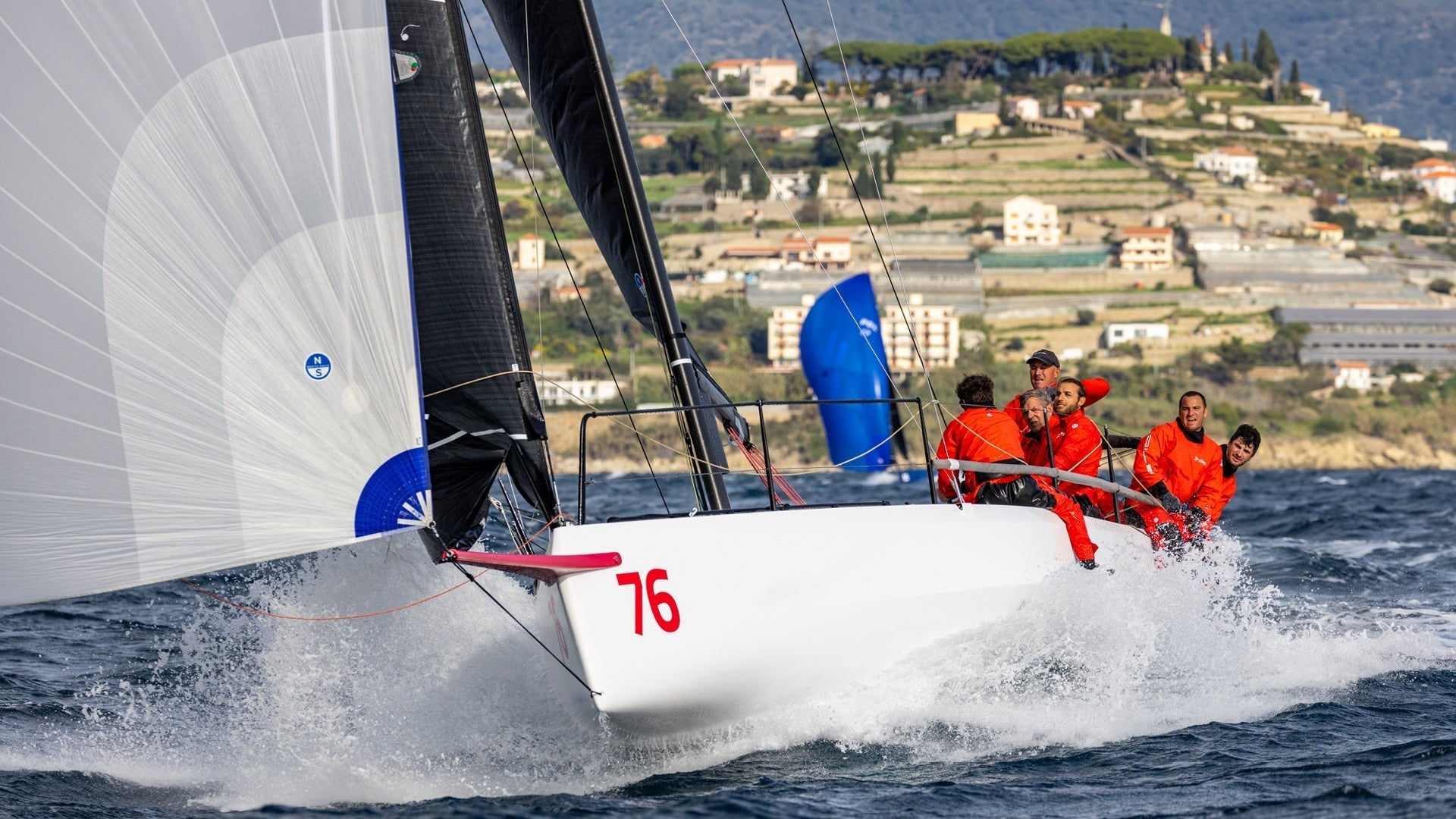TIPS AND EASY ACTIONS TO GREEN YOUR BOAT
Learn how to reduce pollution with scientifically backed steps and guides from Sailors for the Sea.
By Mădălina Preda
Boating, whether wind-powered or motorized, has various environmental impacts, ranging from gas emissions from the burning of fossil fuels to pollution from chemicals used in vessel maintenance. One study looking at biocide release into San Francisco Bay found that 72% of the copper entering the water came from discharges from antifouling paint and in-water hull cleaning. In Australia, another study estimated that the local recreational boating sector emitted 70,000 tons of planet warming gasses.
Sailors and boaters looking to reduce these types of pollution and make their boat more environmentally sound have a few guides that can help them in the process. At North Sails, we like the one created by our Newport-based friends at Sailors for the Sea. Their Green Boating Guide includes well researched and scientifically backed steps that any boater can take, such as which sunscreen to use, how to best winterize your boat or which are the best batteries to choose for best life span and reduced costs overtime.
“We created this Green Boating Guide because when we were looking at the resources that were available at the time, they were either short, trifold brochures that didn’t have much information,” says Shelley Brown, Director for Sailors for the Sea. “Or extremely detailed, dense books. We wanted to produce a resource that gave boaters enough practical guidance of what they could do to protect their waters, but was not too overwhelming.”
SAVE ON FUEL. REDUCE YOUR WEIGHT.
When the first Green Boating Guide was launched ten years ago, a lot of people were focused on replacing single-use plastic products with reusables. Nowadays Brown says she sees sailors vying to make more significant changes.

One way to reduce the overall environmental impact of your boat is to maintain and repair your sails. North Sails offers one year of free repairs for all new sails.
Chris Wolfe is one of the boat owners going the extra mile to make their boat more sustainable and less polluting. A winner of the Rolex Yachtswoman of the Year in 2023, Wolfe first caught the sailing bug at the age of 16. In college, she joined the racing team at the University of Washington, and 30 years later she is still racing boats competitively. From her home in the Pacific Northwest, she can see water and wildlife from her window.
“We're just always thinking about being on the water and pinching ourselves because we feel fortunate to live in this very special place,” Wolfe says of her home on Orcas Island. “And because of that, we’ve become very protective about wanting to make sure that we are making the choices that are appropriate and protective of this important ecosystem.”
This protective spirit inspired Wolfe to become an ambassador for Sailors for the Sea and to use her own boat as proof that you can be a competitive sailor and champion sustainability in the sport. Together with her life and sailing partner Justin Wolfe, she installed solar panels in preparation for a transatlantic race on a boat they recently bought in Europe and named Red Ruby, after a species of octopus that lives in the Salish Sea (their local waters).
“A very easy thing for us to do was just make sure that we're harnessing the power of the sun for any charging,” Wolfe says. “And what that allows us to do is not use the engine as much and not burn diesel fuel.”

Harnessing the power of the sun and the wind. These solar panels helped yachtswoman Chris Wolfe save 17 gallons of fuel in a recent trans-Atlantic race. 📸 Chris Wolfe
This April, Wolfe completed the Cap-Martinique transatlantic race using six solar panels—one 100W panel and five 50W panels—and only one fuel tank that held 13 gallons of diesel. Because of the solar panels, Wolfe avoided having to bring jugs of fuel (and reduced the risk of spilling it in the water). She estimates they avoided running the engine for 53 hours, the equivalent of about 17 gallons of fuel.
Because of the solar install, Wolfe was also able to reduce their race weight by approximately 114 pounds (124 pounds of avoided fuel, minus the weight of the solar panel, wire and charge controller). The total cost savings on fuel for this one race was US$130. The investment in the solar panels was US$500.
“On Red Ruby it's actually a very small fuel tank and we had no problems supplementing the small tank of diesel with all the solar that we had on board to keep our batteries charged. And that worked fantastically. So that's a very easy modification that most people can do,” Wolfe says.
Wolfe also recommends that boat owners understand their engine’s capabilities and what are the most efficient battery charging settings for their needs. “Depending on the chemistry of the batteries you use on your boat, you may only want to charge your batteries up to 80% because that is the most efficient charging range, while the last 20% takes a lot more fuel because it’s charging at a much lower rate,” Wolfe says.
CAN RACING BECOME MORE SUSTAINABLE?
Racing sailors are also taking more steps to reduce pollution during events by replacing single-use items with reusables, or by finding creative ways to reuse waste and natural raw materials.
At the Women’s Match Race organized by the Royal Danish Yacht Club in 2022 prize winners received medals made from 100% seaweed and seagrass. The club used the Clean Regattas framework developed by Sailors for the Sea to help organizers reduce the environmental impact of racing events. Over the years, they’ve eliminated single-use water bottles and plastic straws, switched to serving food with plastic-free dinnerware and implemented new waste collection processes.

These salty medals were made in collaboration with Danish designer Mathias Falkenstroem and the Danish Technological Institute from dead seaweed collected locally in Skovshoved Harbour and Oresund. 📸 Sailors for the Sea and the Royal Danish Yacht Club
The Clean Regattas program was developed as a self-certification framework built on 20 different practices that can reduce the environmental impact of water events. “We work with any water-loving event, so it doesn’t just need to be a regatta, it can be a boat show or a rally or just a party that’s hosted near or close to the water,” says Shelley Brown of Sailors for the Sea. “We keep the best practices general enough that you can accomplish them in many ways, so it’s accessible to a wide variety of events, in different locations, and people come up with such great solutions to sustainability challenges. We then try to share those innovative solutions with others.”
With over 4,100 events hosted since 2006, the Clean Regattas program has reached 1.7 million sailors and attendees across 53 countries. “We certify at different levels,” Brown says. “You could be a participant where you’re just doing a couple of best practices, all the way up to Platinum, where you’re accomplishing 19 out of 20. Each year the events come back we see them trying to strive for higher levels of certification and we like to say ‘Progress, not perfection’ because it can be overwhelming to make these huge drastic changes.”

Sailors and race organizers are increasingly looking at the environmental footprint of racing. The Clean Regattas program developed by Sailors for the Sea offers tons of tips for how to green any water-based event. 📸 Cate Brown, 2023 Block Island Race Week
Sailors for the Sea is starting to work on programs also for the offshore sector, such as creating opportunities to do citizen science and reporting not only whale sights, but also marine debris. When you’re not able to stop at anchor and provision for a week, two weeks, or even three weeks at a time, you are more limited in your sustainable choices, but there are still things race organizers can do.
“These races are going to locations all around the world,” says Brown. “They are important voices for the oceans. If this can happen at a sailing event, I think it can happen at other sporting events, and this could have a ripple effect.”
More and more, sailors recognize that extending the life of your vessel, kit or set of sails often makes both economic and environmental sense. From using tried and tested old solutions like vinegar-based cleaning products to embracing new technology like solar power, the options available for boaters to make more sustainable choices are increasing every day. Ultimately, guides like the ones created by Sailors for the Sea offer best practices at a certain point in time but are not meant to be exhaustive or finite lists.
“Look at the Green Boating Guide, see different ideas and remember that they are a starting point,” says Chris Wolfe. “You should be doing your own research because you may find other opportunities to make great choices that could then continue to build these frameworks for everybody.”
GET INVOLVED
Download the Green Boating Guide
Join the Clean Regattas community
ABOUT THE AUTHOR
Mădălina Preda is at the forefront of efforts to protect the ocean. Formerly the Communication Specialist at Greenpeace International, and the Brand Managing Editor at Patagonia, she is now steering North Sails to go beyond marine sustainability to become Ocean Positive.









